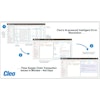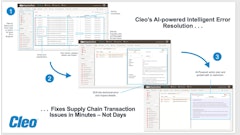
With generative AI (GenAI) expected to enter what Gartner calls the ‘trough of disillusionment’ in 2024, measurable outcomes and improvements in business process efficiency will become the imperative. Organizations that can move past the AI marketing hype will be best positioned to partner with vendors to build innovative, high-impact GenAI capabilities. Additionally, amid budgetary constraints in the year ahead, procurement departments will come to realize the need for a critical shift in mindset – away from discrete systems (whether suites or specialized solutions) and toward unified experiences.
As an industry on the brink of major evolution in 2024, the outlook for procurement in the months ahead holds much to be excited about. Let’s explore three of the key trends procurement leaders and the industry at large will face, and how organizations can set themselves and their employees up for success.
Widespread Adoption of Orchestration Tools
As budgetary constraints continue to be a prevalent theme across procurement departments, orchestration will increasingly become a solution many turn to in response. The implementation of orchestration tools for procurement will allow organizations to synchronize interdependent procurement teams, systems and processes. What’s more, procurement leaders will see improvements in their operational efficiency as the management of teams, risk, costs and sustainability become more streamlined as a result.
This shift towards a more unified experience is incredibly beneficial for procurement. Not only are unified experiences faster and less expensive to run, but they also address fundamental issues related to user adoption, operational efficiency, agility and data integrity in ways that discrete systems alone cannot. By coordinating activities between human and digital agents and centralizing processes through a single rule and decisioning engine, orchestration provides stakeholders with a single, unified experience across all stages and steps in the procurement process. The result? An enhanced and frictionless user experience and complete visibility and agility in response to change.
All Eyes on GenAI (For Now)
With the use of generative AI (GenAI) becoming more and more widespread, organizations will begin to demand more measurable impact from the tooling built into their own implementations. The novelty of existing features such as chatbots and auto-summarization capabilities will soon be considered table stakes, and vendors will find themselves under increased pressure to innovate using large language models (LLMs) in ways that clearly demonstrate business value. In the context of procurement, this means moving beyond chatbots to higher-value AI use cases that provide personalized intake and onboarding experiences for procurement professionals, requesters and suppliers.
Gartner predicts 20% of brands will lean into positioning and differentiation based on the absence of AI in their products by 2027. This means the industry will likely see more GenAI-powered features applied transparently – improving user experiences without touting that GenAI is being used. Procurement organizations that move past the AI marketing hype will be best positioned to partner with vendors to build innovative, high-impact GenAI capabilities.
Stealing the Spotlight
Talent shortages will impact the procurement industry in the coming years, according to recent research from Gartner, with only 14% of procurement leaders having adequate talent to meet their future needs. To address this, leaders must consider how today’s technology decisions impact their ability to hire, train and retain talent in the future. Procurement leaders who choose to invest in AI-powered orchestration solutions that provide unified, intuitive and personalized procurement experiences for every stakeholder will be able to avoid the high cost of replacing their existing systems and reap more benefits for other aspects of their business.
As an example, a proper orchestration tool can help onboard new employees without lengthy training processes. This leads to improved retention rates as legacy systems are replaced with streamlined experiences that better enable workers. Orchestration tools also make it possible to create and update processes without coding knowledge, allowing leaders to improve agility based on future needs, challenges, and stakeholder expectations.
2024 will continue to bring both new challenges and new innovations to the procurement industry. With the continued advancement of generative AI, implementation of orchestration and demand for more human experiences beyond the current hype, it’s critical for today’s procurement professionals and their organizations to be prepared with the technologies they need to succeed no matter what may bring.













![Pros To Know 2026 [color]](https://img.sdcexec.com/mindful/acbm/workspaces/default/uploads/2025/08/prostoknow-2026-color.mduFvhpgMk.png?ar=16%3A9&auto=format%2Ccompress&bg=fff&fill-color=fff&fit=fill&h=135&q=70&w=240)






